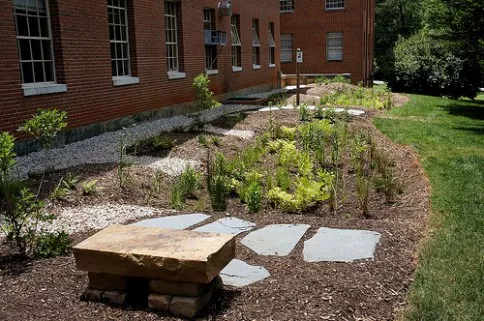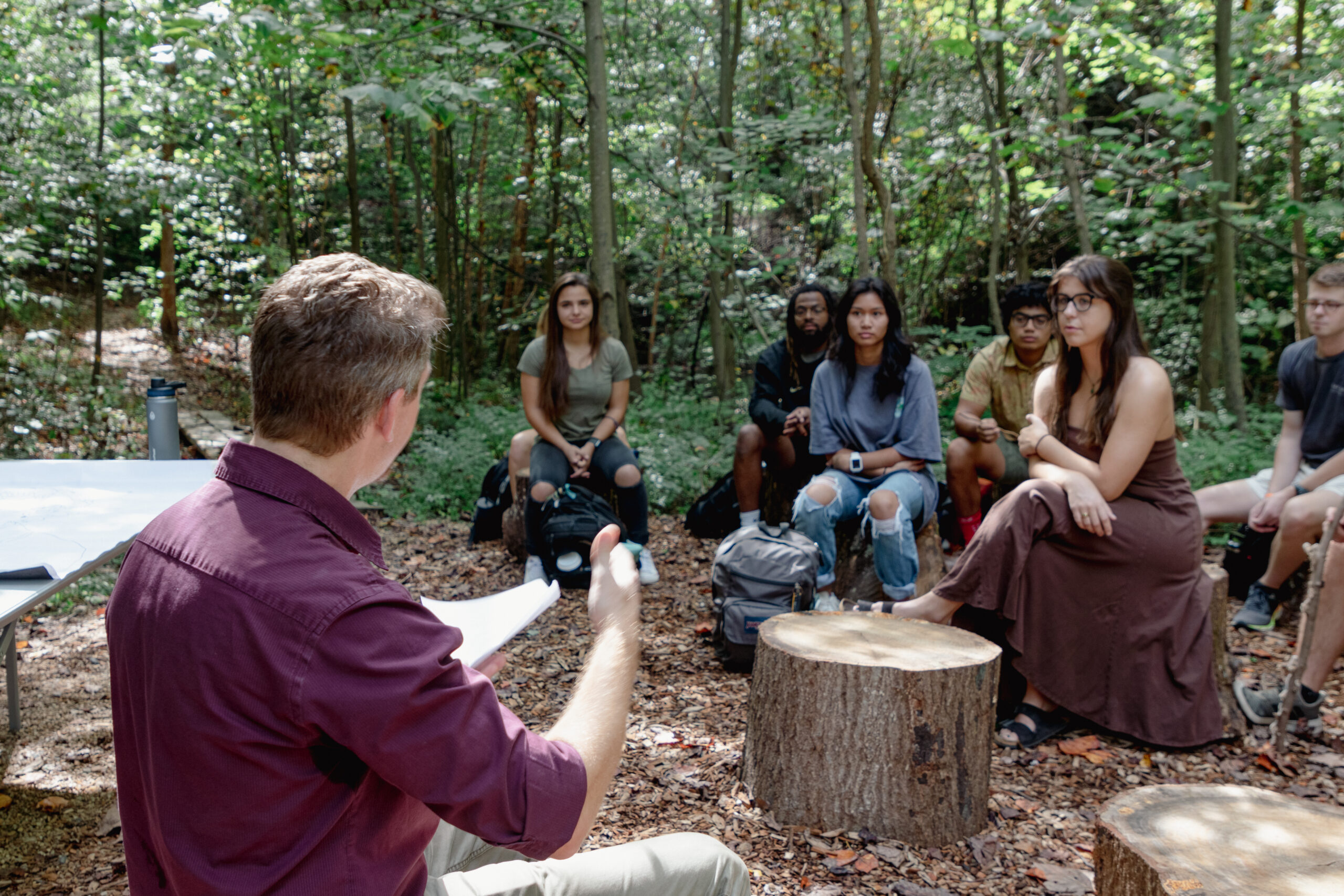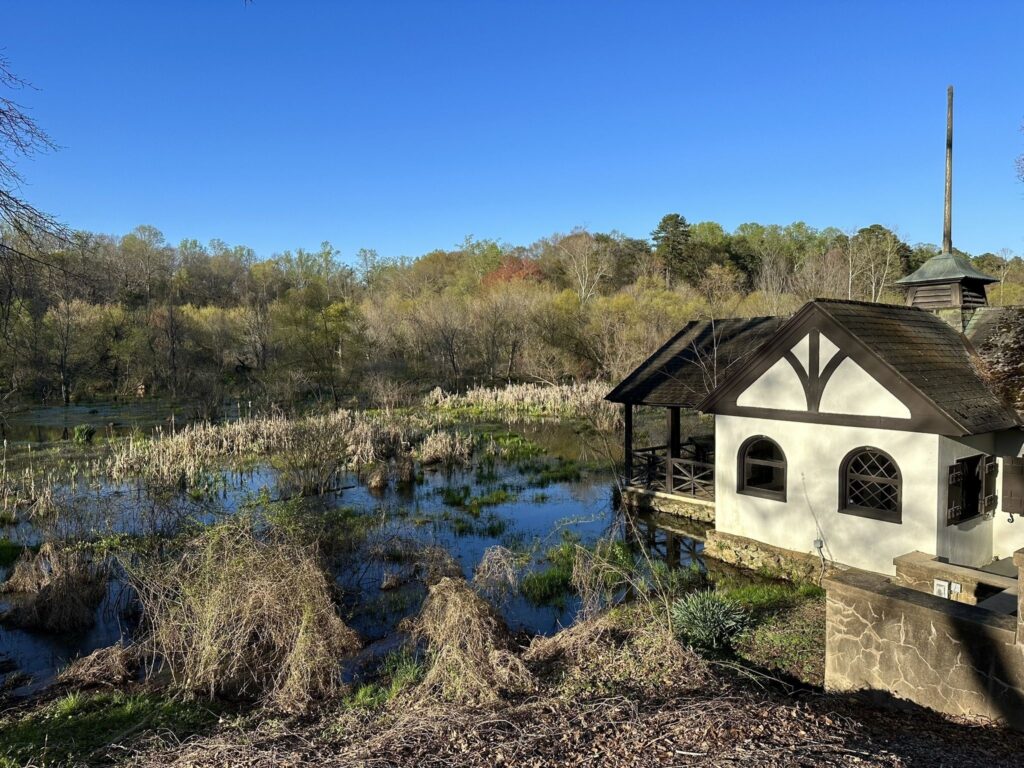Perspectives on Sustainability, Quarterly Newsletter
By: Krista Stump, Manager of Engaged and Experiential Learning for Sustainability
Krista studied stormwater management while pursuing a Master’s in environmental and ecological engineering at Purdue University. She facilitated statewide low impact development (LID) workshops as an Extension faculty member at the University of Florida.
North Carolina’s Imminent Issue
California has recently been inundated with heavy rainfall due to atmospheric rivers resulting in at least 21 deaths, 1,400 rescues, and 700 landslides. Although atmospheric rivers are naturally occurring, they will likely become more frequent and extreme with climate change.
In North Carolina, both the total annual precipitation and hurricane-associated storm intensity and rainfall rates are projected to increase as the climate warms.
“Observational and modeling data suggest climate change is making extreme rainfall events more likely, which increases flood risk,” says Dr. Steve Smith, Assistant Teaching Professor in the Environment and Sustainability Studies Program. “This is partly due to the increase in water vapor associated with warmer temperatures, but also reflects the strengthening of certain patterns of atmospheric circulation.”
Last year, Winston-Salem1 experienced 15 days with over one inch of rain. Rainfall for the year was nearly two inches above normal.
The impact of these heavy rain events can be seen – and felt – in the places we walk, live, work, and play. As stormwater drains are overwhelmed, low-lying sidewalks and roads become inundated with water, polluting waterways and increasing flood risk.
Sound stormwater management practices can build resilience and ability to respond to impacts we are experiencing now.
Nature-Inspired Stormwater Management
In traditional stormwater management practices, stormwater is channeled to a retention pond where soil particles can settle before the water is slowly released to a water body. When land is developed, sponge-like green space is typically replaced with hard impermeable surfaces like roads, parking lots, and roofs. Instead of infiltrating into the ground, rainwater flows off of these hard surfaces, washing into water bodies and low-lying land, bringing soil and pollutants along for the ride.
Low impact development (LID) is a term used to describe stormwater management practices that embody nature’s flood-control methods. Instead of channeling stormwater away, it is held on site in a way that allows it to filter naturally through the earth, preventing polluting stormwater runoff. LID examples include trees, rain gardens, cisterns, permeable pavement, and bioswales.
Wake Forest Campus Stormwater Learning Spaces
Interested in seeing LID in action? Visit the Winston Hall rain garden on campus. The rain garden slows runoff from the building’s copper gutters, mitigating erosion and flooding of the adjacent hillside and parking area. In addition, the carefully selected plants support pollinators, including monarch butterflies.

The Tohi Garden is another stormwater demonstration site and outdoor classroom space tucked behind Angelou Hall. It showcases the integration of nature with traditional stormwater management, where stormwater pools and cascades down a series of rocky areas, creating habitat for turtles, ducks, and heron.

Explore the beauty and science of wetlands at Lake Katherine at Reynolda Gardens. Flooding can cause riverbank erosion and collapse, leaving harmful amounts of soil in the water. Wetlands mitigate these negative impacts by temporarily storing floodwaters. They slow down water entering nearby water bodies, while providing critical habitat for wildlife.

An Ounce of Prevention
Although effective stormwater management is important, global warming must be slowed to mitigate future flood risks.
“Both coastal and inland flood risks are best mitigated by limiting the increase in global average temperature, as a warmer world means higher sea level and more intense storms,” says Smith. “Local mitigation plays a role, but improving flood resilience may not be realistic for all communities.”
Flood resilience is an increasingly important topic with applications across disciplines. Whether in business, art, engineering, politics, or science, future leaders of all fields play a role in designing and implementing flood mitigation.
If you are a faculty member interested in visiting a stormwater demonstration site with your class or if you would like to learn about additional on-campus learning spaces, please contact Krista Stump, Manager of Engaged and Experiential Learning for Sustainability at Wake Forest.
References:
- North Carolina Climate Science Report: Report Findings and Executive Summary
- Atmospheric Rivers Hit West Coast | NESDIS
- North Carolina – State Climate Summaries 2022
- World Wetlands Day : Everything You Need to Know About NC Wetlands – North Carolina Wildlife Federation
- Low-Impact Development | North Carolina Coastal Federation
- Note: Meteorological data for the Winston-Salem area is collected at the weather station at GSO airport. ↩︎
